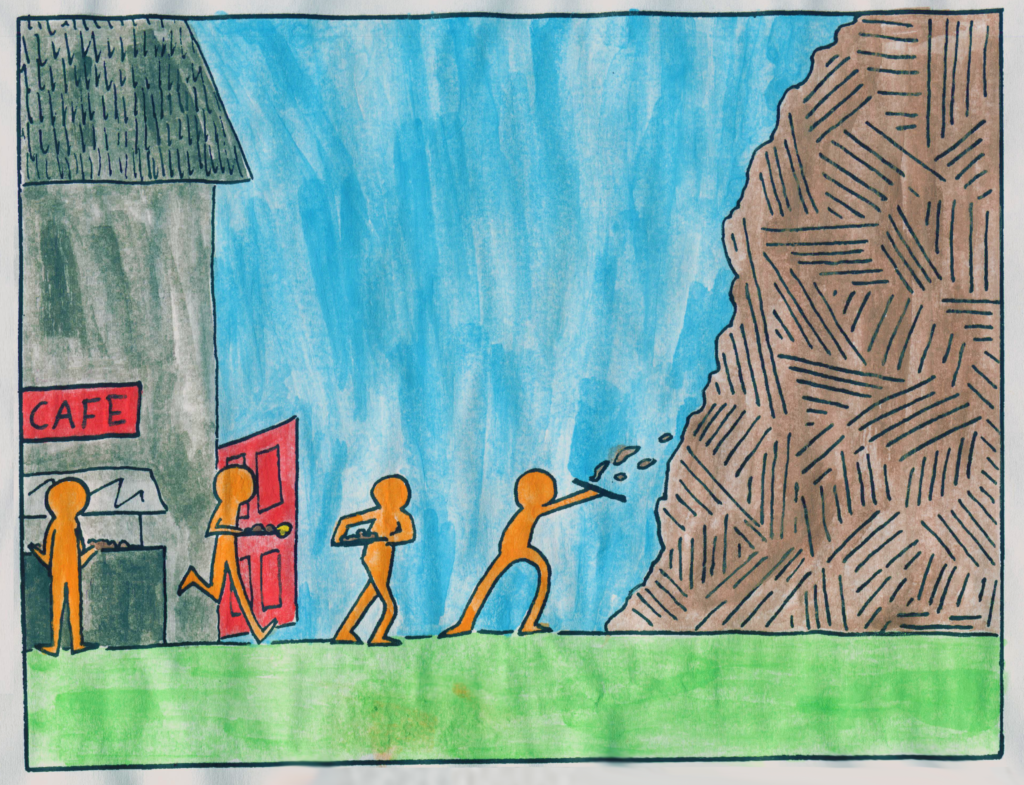Editorial: A new approach to campus sustainability
March 14, 2018
Half a bowl of rice here. A quarter of an orange there. Most of a waffle you decided you didn’t want to eat because you suddenly remembered three bites into it that you were trying to eat less sugar. The amount of food we throw away on campus doesn’t seem like a lot when we look at it as an individual person or a single meal, but the student body’s unused groceries and half-eaten dining hall plates add up to a monumental portion of food waste every year.
A study from RecyclingWorks, a Massachusetts-based organization committed to reducing waste, estimates that a single student living on any particular campus creates 141.75 pounds of food waste on average per year. A student living off campus wastes considerably less, but still discards 37.8 pounds of food every year. When we consider that Northeastern’s undergraduate population is almost 18,000, the amount of food wasted accumulates into the hundreds of thousands of pounds in just one year.
When Northeastern students discuss sustainability, we need to remember that this isn’t confined to the universe of man-made waste such as plastic or paper. Despite the large food production industry that exists in our country, food is still a resource. Both students and the university need to be held accountable for reducing waste on campus. If we work together, we can create a campus that encourages values of sustainability preached by student organizations like the Husky Environmental Action Team and Northeastern administration.
While the university itself should be held accountable for creating programs to reduce food waste, students will have to be the backbone of a movement that could potentially make Northeastern a zero-waste campus. And, no, it’s not just about eating all the food on your plate in International Village, although that’s a pretty great place to start.
Bringing home leftovers from restaurants, rather than leaving them, can help reduce food waste. This is not only beneficial to the environment, but also saves money. In the dining hall, we can take one plate of food at a time and finish it before getting up for more, rather than sitting down at a table with two plates and a bowl of cereal that gets soggy before we even get to it.
The possibilities continue once we leave the dining hall; food waste can be reduced from within the comfort of our dorms and apartments as well. It is as simple as preparation. If we commit to collaborate with our roommates to make grocery lists, share basics like milk, bread and produce and plan the portions of food we buy, we can avoid throwing out rotten food.
It is hard to miss the compost bins and lack of trays in the dining halls, which are testaments to Northeastern’s attempt to be environmentally friendly. The job, however, is not finished and the administration’s efforts to reduce food waste cannot be over.
The first step could to be assemble a student-faculty task force within the sustainability department specifically committed to reducing food waste. This group could begin to network with soup kitchens and other organizations that might be open to taking the excess dining hall food at the end of the night. A status report by Project Bread found that there are nearly 266,500 food insecure homes in Massachusetts alone, meaning they do not have reliable access to food.
It doesn’t seem right that the communities surrounding Northeastern struggle to find something to eat, while we are scraping barely touched meals off our plates. Although there are health regulations that prohibit reserving food that has been touched, Northeastern can establish programs to reduce the amount of touched or contaminated food.
The administration does not need be alone in its journey toward becoming a zero-waste campus; there are groups such as The Campus Kitchens Project and Food Recovery Network that work side-by-side with colleges to reduce food waste.
When we are conscious of wasting less food, everybody wins. The university develops a reputation for being an institution that cares about the rest of the world. Students save money. People who are food insecure have more access to nutrition. The first step is as simple as making a conscious decision to be aware of their effect on the planet.








